#APIs (for Application Programming Interfaces)
Explore tagged Tumblr posts
Text
Software Development Market Anticipated to Grow Owing to Digital Transformation
The Software Development Market offers a spectrum of solutions ranging from custom application development and enterprise resource planning (ERP) software to mobile apps, cloud-native platforms, and DevOps toolchains. These products streamline workflows, automate business processes, and enable real-time analytics, driving operational efficiency and improving time-to-market. Organizations leverage these solutions to enhance customer engagement, scale infrastructure dynamically, and reduce total cost of ownership.
Get More Insights on Software Development Market https://www.patreon.com/posts/software-market-131141770
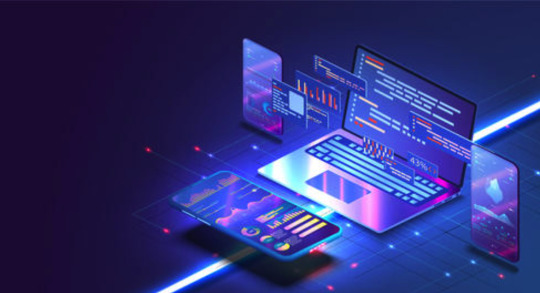
#SoftwareDevelopmentMarket#AIdrivenAutomation#IDEs (for Integrated Development Environments)#APIs (for Application Programming Interfaces)#CoherentMarketInsights
0 notes
Text
API development is a cornerstone for contemporary applications in today’s hyper-related virtual world. APIs (Application Programming Interfaces) empower developers to integrate various systems and create seamless and enriched experiences, making them indispensable in app development.
This article illuminates you on why APIs matter and how businesses can leverage them for success.
So, what’re you waiting for? Let’s delve deep into the world of API development.
Happy reading!
#api development#Application Programming Interfaces#apis#app development#mobile app development#software development process
0 notes
Text
API-First Development: Revolutionizing Digital Integration and Scalability

Explore how API-first development is transforming digital integration and scalability. Learn how this approach streamlines development, enhances flexibility, and enables seamless communication between systems, driving innovation and growth in modern applications. Visit now to read more: API-First Development: Revolutionizing Digital Integration and Scalability
#agile development#api management#api strategy#api-first development#application programming interfaces#digital integration#digital transformation#microservices architecture#reusable apis#scalable software#software delivery velocity
0 notes
Text
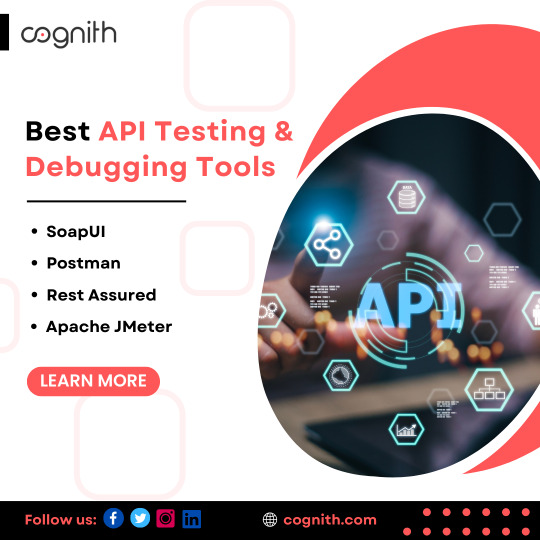
Introduction to API Testing for Beginners Start your journey in API testing with our beginner-friendly introduction and essential tips.
0 notes
Text
Understanding the Basics of APIs
Application Programming Interfaces (APIs)
crucial components in modern software development. They allow different software systems to communicate with each other and facilitate the integration of various services and functionalities. This article explores the basics of APIs, their types, and their importance in today’s tech landscape.

What is an API? for more........
An API (Application Programming Interface) is a set of rules and protocols that allows one piece of software to interact with another. It defines the methods and data formats that applications can use to request and exchange information. APIs enable different software systems to communicate, share data, and perform operations without needing to understand each other's underlying code.
Key Concepts:
Endpoint: A specific URL where an API service can be accessed. Endpoints represent different functionalities or resources offered by the API.
Request: The action taken by a client to interact with an API, such as retrieving data or sending information. Requests typically include a method (GET, POST, PUT, DELETE), headers, and sometimes a body.
Response: The data or acknowledgment returned by the API after processing a request. Responses usually include status codes, headers, and a body containing the requested information or result.
Authentication: A process used to verify the identity of a user or application accessing the API. Common methods include API keys, OAuth tokens, and Basic Auth.
Types of APIs
Web APIs: Also known as HTTP APIs or REST APIs, these are accessed over the web using HTTP/HTTPS protocols. They are widely used for web services and allow different systems to communicate via the internet.
RESTful APIs: Representational State Transfer (REST) APIs use standard HTTP methods and are designed to be stateless. They operate on resources identified by URLs and support various formats like JSON and XML.
SOAP APIs: Simple Object Access Protocol (SOAP) APIs use XML-based messaging protocols for exchanging information. SOAP APIs are known for their robustness and are often used in enterprise environments.
GraphQL APIs: A query language for APIs that allows clients to request specific data. GraphQL APIs provide a more flexible and efficient way to interact with data compared to REST APIs.
Library APIs: These APIs are part of software libraries or frameworks that provide predefined methods and functionalities for developers to use in their applications.

Click now
For those interested in deepening their understanding of APIs, including practical applications and advanced concepts, Getege offers a comprehensive course. This course provides detailed insights into API design, implementation, and best practices, helping you master the fundamentals and more complex aspects of API development.
#APIs#Application Programming Interfaces#REST API#SOAP API#GraphQL API#Web APIs#API Basics#API Integration
0 notes
Text
Conseils aux installateurs sur la borne de recharge pour véhicules électriques OZEV et les subventions aux infrastructures

Vous avez besoin d'un installateur agréé OZEV pour réclamer les subventions de borne de recharge pour véhicules électriques (VE) OZEV. Cette page donne un aperçu du processus de subvention pour les installateurs autorisés. Si vous souhaitez en savoir plus sur les subventions, consultez la section de ce guide sur les subventions disponibles. Vos responsabilités en tant qu'installateur agréé
En tant qu'installateur agréé, vous devez : aider le client à comprendre s'il répond aux critères de subvention installer uniquement des modèles de bornes de recharge éligibles vérifier que toutes les bornes de recharge installées fonctionnent et répondent aux exigences de sécurité fournir et télécharger toute la documentation pour soumettre la réclamation ne pas facturer la subvention aux clients dans l’avance d’une réclamation fournir au client une facture par demande
Devenez un installateur agréé Remplissez une demande d'installateur agréé Nous vous enverrons une lettre indiquant que vous êtes autorisé. Vous pourrez alors proposer les subventions à vos clients. Subventions disponibles pour vos clients Les subventions suivantes sont disponibles pour l'installation de bornes de recharge et d'infrastructures pour véhicules électriques :
Subvention de borne de recharge pour les locataires et les propriétaires d'appartements Subvention de borne de recharge pour les ménages disposant d'un parking dans la rue Subvention de borne de recharge et d'infrastructure pour le personnel des entreprises et leur flotte Parkings Borne de recharge et subvention aux infrastructures pour les propriétaires, y compris les parkings.
Programme de tarification sur le lieu de travail. Programme de tarification sur le lieu de travail pour les établissements d'enseignement financés par l'État Aperçu du processus de subvention. Subvention de borne de recharge pour les locataires et les propriétaires d'appartements. Le client vous contacte pour un devis. Vous envoyez un contrôle d’éligibilité.
Nous confirmons qu'ils sont éligibles. Vous installez la borne de recharge autorisée choisie par votre client. Vous soumettez votre demande via le portail en téléchargeant des photos et en fournissant les informations demandées sur le portail. Nous évaluons votre demande et si elle aboutit, nous vous versons la subvention.
Subvention de borne de recharge pour les ménages disposant d'un parking dans la rue. Le client vous contacte pour un devis. Vous soumettez une demande pour le client. Le client complète le formulaire qui lui a été envoyé. Nous confirmons si le client est éligible à la subvention. Une fois la solution de recharge transversale installée, vous installez la borne de recharge.
Vous complétez votre demande via le portail, en téléchargeant des photos de la borne de recharge et de la solution de recharge transversale et en fournissant les informations demandées. Nous évaluons votre demande et si elle aboutit, nous vous versons la subvention.
Subvention de borne de recharge et d'infrastructure pour le personnel des entreprises, les parcs de stationnement et les propriétaires. Le client vous contacte pour un devis. Voir aussi «Subventions destinées à l’installation borne de recharge poids lourd et camions électriques».
Le client dépose une demande via le portail. Vous installez les bornes de recharge et/ou l'infrastructure. Vous complétez votre demande via le portail, en téléchargeant des photos et en fournissant les informations demandées sur le portail. Nous évaluons votre demande et si elle aboutit, nous vous versons la subvention.
Programme de tarification sur le lieu de travail
Il existe un processus différent pour cette subvention. Vous pouvez en savoir plus sur le système de facturation sur le lieu de travail. Spécifications des points de recharge et des infrastructures. Lisez les spécifications requises pour les bornes de recharge et l’infrastructure.
Utiliser le portail de gestion des sinistres
Ce portail de gestion des réclamations vous permet de créer de nouvelles réclamations et de suivre les réclamations existantes pour :
les locataires et les propriétaires d'appartements - subvention de borne de recharge et d'infrastructure pour le personnel de l'entreprise et les parkings de flotte - subvention de borne de recharge et d'infrastructure pour les propriétaires (y compris les parkings résidentiels)
Connectez-vous ou créez un compte pour réclamer une subvention de borne de recharge pour véhicules électriques. Il existe différents portails pour le système de tarification sur le lieu de travail. Subvention aux bornes de recharge pour les ménages disposant d'un parking dans la rue
La page des spécifications contient des informations sur ce que vous pouvez réclamer. Consultez la rubrique « Ce que vous pouvez réclamer ».
Pour soumettre une réclamation, vous devez fournir : les détails des bornes de recharge que vous installez - un schéma du parking (le cas échéant) une copie de votre facture - il y a des instructions de facturation sur la page des spécifications
Les détails de la borne de recharge incluent : la marque et le modèle indiqués sur la liste des équipements approuvés par OZEV : des photos du numéro de série qui montrent la borne de recharge installée - suffisamment claires pour vérifier le modèle installé - et son emplacement.
Si vous rencontrez un problème avec une réclamation et devez nous contacter, utilisez ces coordonnées : pour une personne qui possède un appartement ou vit dans une propriété louée, envoyez un e-mail :
[email protected] pour une personne disposant d'un parking dans la rue, envoyez un e-mail : [email protected] pour un propriétaire demandant des subventions pour des propriétés résidentielles ou commerciales, e-mail : [email protected].
Pour demander des subventions d'infrastructure pour des propriétés résidentielles ou des petites et moyennes entreprises (PME), envoyez un e-mail à : [email protected] et indiquez s'il s'agit d'une propriété résidentielle ou commerciale. Assurez-vous d'avoir les informations suivantes du client avant de nous contacter :
Numéro de réclamation s'il s'agit du nom de l'installateur d'une application de propriétaire, quel schéma correspond à la réclamation, pour les captures d'écran si vous avez rencontré des problèmes en essayant de soumettre une candidature. Si vous rencontrez des problèmes techniques, envoyez un e-mail à : [email protected].
Envoyez un e-mail à [email protected] pour des problèmes techniques liés à la subvention de stationnement dans la rue. Utilisez une API pour soumettre plusieurs réclamations pour les locataires et les propriétaires d'appartements
Une API (Application Programming Interface) permet à 2 ou plusieurs programmes informatiques de communiquer entre eux. Vous aurez besoin d'un programme informatique configuré pour utiliser l'API. Nous ne fournirons pas ce logiciel. Vous pouvez soumettre plusieurs réclamations à la fois à l'aide de notre API. Ceci n’est disponible que pour la subvention aux appartements et aux locataires.
Vous devrez d'abord demander une clé API afin que nous puissions vérifier vos réclamations lorsque vous les soumettez. Pour demander une clé API, envoyez un e-mail à [email protected] avec : le nom et l'adresse de votre entreprise votre numéro d'installateur OZEV les détails de votre fournisseur de logiciel - si vous en utilisez un
Il est important que vous gardiez votre clé en sécurité. Ne le partagez avec personne en dehors de votre organisation, en dehors de votre partenaire logiciel. Une fois que vous avez votre clé, vous pouvez la fournir à votre équipe de développement logiciel ou à votre partenaire logiciel et partager notre documentation API avec eux.
Pour commencer, vous aurez accès à un environnement de test. Une fois que vous aurez démontré que vous pouvez télécharger une revendication de test à l'aide de l'API, vous recevrez une clé pour accéder à l'environnement de production. Vous pourrez ensuite soumettre des réclamations à l'aide de l'API.
Notre charte des informations personnelles
Notre charte relative aux informations personnelles contient les normes auxquelles vous pouvez vous attendre lorsque nous demandons ou détenons vos informations personnelles.
0 notes
Text
In the realm of mobile app development, APIs (Application Programming Interfaces) are akin to secret tunnels that allow different software programs to communicate effortlessly.
#mobile app development#API in mobile app development#Application Programming Interfaces#advantage of using API in mobile app
0 notes
Text
What is API Development : A Cutting-Edge API Development Unveils Seamless Integration Solutions For Websites
API stands for Application Programming Interface. In the context of APIs, the word Application refers to any software with a distinct function. API development refers to the process of creating Application Programming Interfaces (APIs), which are sets of rules and protocols that allow different software applications to communicate with each other.
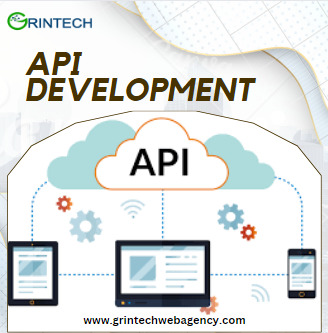
APIs define the methods and data formats that applications can use to request and exchange information. They enable developers to build software that can interact with other systems, access external data or services, and integrate with various platforms. API development involves designing, building, testing, documenting, and maintaining APIs to ensure smooth and efficient communication between different software components or systems.
#API Development#Application Programming Interfaces#Web Development#what is web agency#grintech web agency#best web agency#web design and web development agency#API Development Agency
0 notes
Text
Application Programming Interface (API) Security Market By Application, End-User And Geography – Forecast To 2033
Market Definition
Application Programming Interface (API) Security is a set of protocols, tools, and processes that are used to secure applications and services that are exposed through an API. APIs are used to provide access to data and services from a variety of sources. APIs can be used to access backend systems such as databases, messaging systems, and other services. As such, APIs must be secured to protect against malicious actors and to prevent unauthorized access.
Market Outlook
Application Programming Interface (API) Security technology is an increasingly important area of technology, as the use of APIs has grown exponentially in recent years. APIs are used in a variety of ways, from connecting applications to enabling data transfer between systems. As such, it is essential that APIs are secured and protected from malicious actors.
One of the key trends in API Security is the use of authentication and authorization. Authentication ensures that only authorized users are able to access an API, while authorization controls the level of access that a user has. Authentication and authorization can be implemented using various mechanisms, such as OAuth 2.0, OpenID Connect, or JSON Web Tokens.
A second key trend in API Security is the use of encryption. Encrypting data ensures that it is kept safe from unauthorized access, and is a vital part of securing APIs. Data can be encrypted using various methods, such as SSL/TLS, HTTPS, or SSH.
A third key trend in API Security is the use of threat detection and response. This involves monitoring APIs for suspicious activity and responding quickly to any potential threats. This can be done using various technologies, such as machine learning and artificial intelligence.
Finally, a fourth key trend in API Security is the use of API management platforms. These platforms provide a centralized point of control for managing APIs, and enable security policies to be applied across multiple APIs. This helps ensure that APIs are kept secure and compliant with regulations.
In summary, the key trends in API Security are the use of authentication and authorization, encryption, threat detection and response, and API management platforms. These technologies help ensure that APIs are kept secure and compliant with regulations, making them more reliable and secure for users.
Application Programming Interface (API) Security is the process of protecting programming interfaces from malicious attacks and unauthorized access to sensitive data. APIs are the backbone of many modern applications, providing access to data and services that are critical for businesses and organizations. As such, it is essential that APIs are secure and protected from malicious actors.
The key drivers of the API Security market can be divided into three categories: technology, regulations, and industry trends.
Technology:
The advent of cloud computing and the proliferation of mobile devices have made APIs an essential part of many applications. As a result, API security has become increasingly important. The use of encryption, authentication, and authorization technologies are essential for protecting APIs. Additionally, the use of API management platforms, such as API gateways, can help organizations manage and secure their APIs.
Regulations:
The increasing number of data breaches and security incidents has led to the adoption of various regulations and standards, such as the General Data Protection Regulation (GDPR) and the Payment Card Industry Data Security Standard (PCI DSS). These regulations and standards require organizations to ensure the security of their APIs. As such, organizations are increasingly investing in API security solutions to comply with these regulations.
To Know More: https://www.globalinsightservices.com/reports/application-programming-interface-api-security-market//?utm_id=1014
Research Objectives
Estimates and forecast the overall market size for the total market, across product, service type, type, end-user, and region
Detailed information and key takeaways on qualitative and quantitative trends, dynamics, business framework, competitive landscape, and company profiling
Identify factors influencing market growth and challenges, opportunities, drivers and restraints
Identify factors that could limit company participation in identified international markets to help properly calibrate market share expectations and growth rates
Trace and evaluate key development strategies like acquisitions, product launches, mergers, collaborations, business expansions, agreements, partnerships, and R&D activities
Thoroughly analyze smaller market segments strategically, focusing on their potential, individual patterns of growth, and impact on the overall market
To thoroughly outline the competitive landscape within the market, including an assessment of business and corporate strategies, aimed at monitoring and dissecting competitive advancements.
Identify the primary market participants, based on their business objectives, regional footprint, product offerings, and strategic initiatives
Request Sample: https://www.globalinsightservices.com/request-sample/GIS25163/?utm_id=1014
Market Segmentation
Application Programming Interface Security Market is segmented into organization size , deployment type, industry and region. Based on organization size the market is categorized into Small Enterprises, Medium Enterprises and Large Enterprises. On the basis of deployment type, it is further segmented into On-premise and Cloud-based. Based on industry it is segmented into BFSI, IT & Telecom, Government, Healthcare and Life sciences, Retail and Consumer goods and Others. Whereas based on region it is divided into North America, Europe, Asia-Pacific and Rest of the World.
Request Customization@ https://www.globalinsightservices.com/request-customization/GIS25163/?utm_id=1014
Major Players
The Application Programming Interface Security Market Report includes players such as Akamai Technologies, Inc. (U.S), IBM Corporation (U.S), Google LLC (U.S), Microsoft Corporation (U.S), Salesforce.com, Inc. (U.S), Barracuda Networks, Inc. (U.S), Axway Inc. (U.S), Ping Identity Corporation (U.S), Imperva, Inc. (U.S) and Cequence Security (U.S), among others.
Request Discounted Pricing@ https://www.globalinsightservices.com/request-special-pricing/GIS25163/?utm_id=1014
Research Scope
Scope – Highlights, Trends, Insights. Attractiveness, Forecast
Market Sizing – Product Type, End User, Offering Type, Technology, Region, Country, Others
Market Dynamics – Market Segmentation, Demand and Supply, Bargaining Power of Buyers and Sellers, Drivers, Restraints, Opportunities, Threat Analysis, Impact Analysis, Porters 5 Forces, Ansoff Analysis, Supply Chain
Business Framework – Case Studies, Regulatory Landscape, Pricing, Policies and Regulations, New Product Launches. M&As, Recent Developments
Competitive Landscape – Market Share Analysis, Market Leaders, Emerging Players, Vendor Benchmarking, Developmental Strategy Benchmarking, PESTLE Analysis, Value Chain Analysis
Company Profiles – Overview, Business Segments, Business Performance, Product Offering, Key Developmental Strategies, SWOT Analysis
Buy your copy here: https://www.globalinsightservices.com/checkout/single_user/GIS25163//?utm_id=1014
With Global Insight Services, you receive:
10-year forecast to help you make strategic decisions
In-depth segmentation which can be customized as per your requirements
Free consultation with lead analyst of the report
Infographic excel data pack, easy to analyze big data
Robust and transparent research methodology
Unmatched data quality and after sales service
Contact Us:
Global Insight Services LLC 16192, Coastal Highway, Lewes DE 19958 E-mail: [email protected] Phone: +1-833-761-1700 Website: https://www.globalinsightservices.com/
0 notes
Text
Demystifying APIs
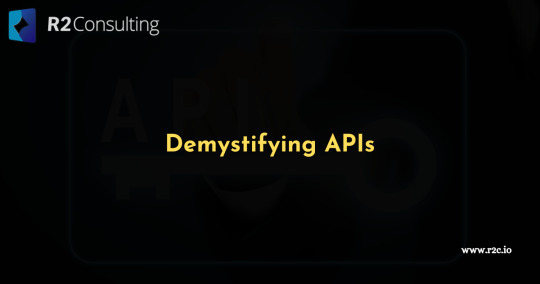
Introduction
Have you ever wondered how your weather app knows what’s happening outside, or how you can seamlessly log in to multiple platforms with a single Facebook account? The answer lies in a realm often unseen by the average user: the world of APIs (Application Programming Interfaces).
So, what exactly is an API?
Think of an API as a waiter in a fancy restaurant. You (the user) are enjoying the delicious meal (the website or app), but it’s the waiter (the API) who relays your orders (requests) to the kitchen (the server) and brings back the responses (data). These responses could be anything from weather updates to news feeds to personalized recommendations.
But what do APIs do? Why are they so important?
APIs serve as essential connectors, enabling communication and data exchange between different applications and servers. They power a vast array of functionalities:
Data access: APIs allow apps to tap into external data sources, like weather services, social media platforms, or news feeds, enriching their features and content.
User authentication: Logins with Facebook, Google, or Twitter? Those rely on APIs to verify your identity and seamlessly connect you to different platforms.
Payment processing: Secure online transactions wouldn’t be possible without APIs connecting your purchase to payment gateways and delivering confirmation back to the store.
App integration: APIs enable different apps to work together, like mapping apps sharing location data with ride-hailing services or fitness trackers syncing with health platforms.
Automation: Businesses use APIs to automate tasks like sending notifications, managing customer data, or controlling smart devices.
Are APIs Standalone Applications?
An API is not typically considered a standalone application in the traditional sense. Here’s why:
APIs as Intermediates:
APIs are software intermediaries that enable communication and data exchange between applications. They don’t function independently but rather act as bridges or connectors.
They don’t have a direct user interface or provide a complete user experience on their own. Instead, they are designed to be consumed by other applications or systems.
Components of Larger Systems:
APIs are often components within larger applications or systems. They provide specific functionality or access to data, but they rely on the surrounding application for overall structure and user interaction.
For example, a web application might have an API to allow other applications to access its data, but the API itself isn’t the entire application.
Backend Focus:
APIs primarily operate on the backend or server-side, handling data exchange and processing requests from clients. They don’t typically have a frontend user interface that users directly interact with.
Comparison to Standalone Applications:
Standalone applications offer a complete user experience with their own user interface and often handle tasks independently. Examples include desktop apps, mobile apps, and web apps that users directly interact with.
APIs as Enablers:
While not standalone applications, APIs play a crucial role in enabling communication and integration between different systems. They are essential for building modern, interconnected applications and services.
They power a vast range of functionalities, from mobile apps fetching data from servers to websites embedding content from third-party services to systems communicating within organizations.
Understanding the “interface” aspect of an API
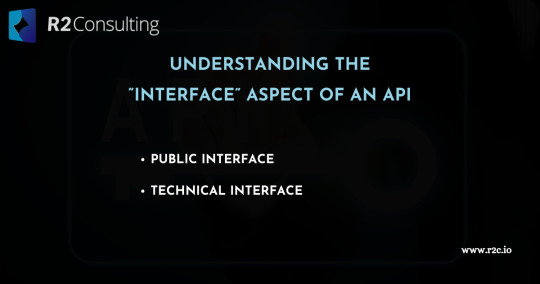
When talking about the “interface component” of an API, it can refer to two slightly different aspects:
Public Interface:
This is the contract between the API provider and its consumers. It defines how external developers or systems can interact with the API. This interface includes several key elements:
API Endpoints: These are the URIs through which requests are sent and responses are received. Each endpoint typically corresponds to a specific resource or action.
HTTP Methods: The API specifies which HTTP methods (GET, POST, PUT, DELETE, etc.) are used for different operations on the resources.
Data Formats: The API defines the format of data exchanged between client and server, typically JSON or XML.
Authentication and Authorization: Mechanisms for securely accessing the API and controlling access to specific resources.
Error Handling: How the API communicates errors and unexpected situations to the client.
Documentation: Clear and comprehensive documentation to guide developers in using the API effectively.
This public interface is essentially the “face” of the API that everyone sees. It’s crucial for making the API easy to understand and use for developers.
Technical Interface:
This refers to the internal structure and implementation of the API itself. It encompasses the programming language, libraries, frameworks, and protocols used to build and execute the API code. While this aspect is less directly relevant to external consumers, it still plays a vital role in determining the API’s performance, scalability, and maintainability.
Therefore, the “interface component” of an API encompasses both the publicly visible contract for interaction and the underlying technical implementation that makes it work. Both aspects are critical for creating an effective and successful API.
Additionally:
Many APIs use tools like API gateways to manage and control the interface. These gateways can sit in front of the actual API code and handle tasks like routing requests, security enforcement, and versioning.
Some APIs also offer dedicated developer portals with interactive documentation, testing tools, and community forums. These features can further enhance the interface and improve the development experience.
How do users actually interact with APIs?
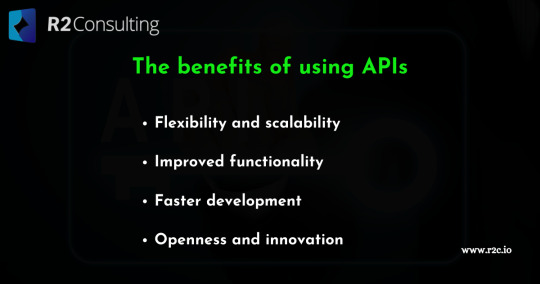
The benefits of using APIs:
Flexibility and scalability: APIs allow developers to build modular applications that can easily integrate with external services and adapt to changing needs.
Improved functionality: Apps can leverage specialized data and tools offered by other APIs, enhancing their own features and capabilities.
Faster development: Developers can avoid reinventing the wheel by using existing APIs for common tasks, leading to faster development and deployment.
Openness and innovation: APIs foster collaboration and innovation by encouraging developers to build upon existing services and create new functionalities.
Final Thoughts
The next time you marvel at the seamlessness of your online experience, remember the silent partners behind the scenes: APIs, the web’s unsung heroes, quietly connecting the dots and making it all possible.
0 notes
Text
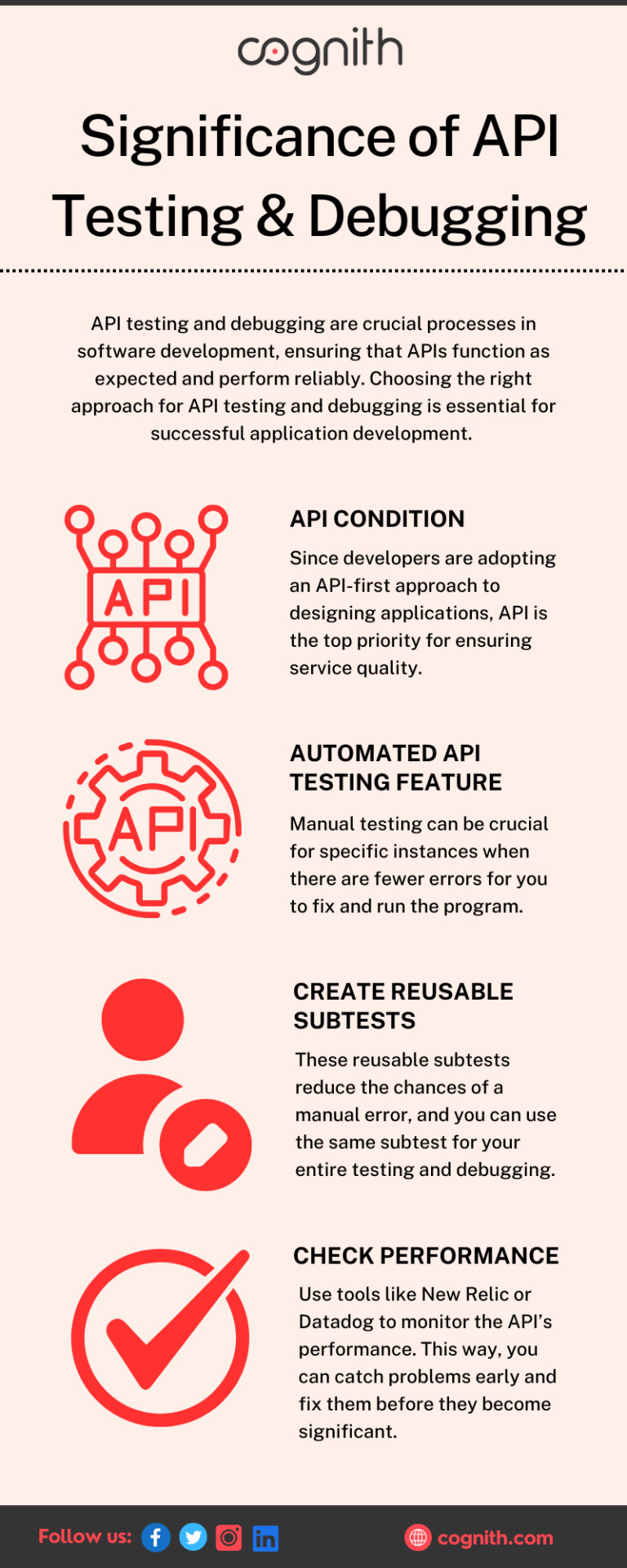
Streamline Your Development Process with API Testing Enhance your development workflow with efficient API testing. Learn key strategies and benefits of thorough API testing.
0 notes
Text

Technology plays a vital role in everyone’s daily lives, from the simplest forms of applications to the most creative inventions. Every application or software has been built by a web developer. In these present days, students and youngsters want to be web developers to make their careers way better.
#Web Development#Remote Work in Web Development#Web Development Certifications#Interview Tips for Web Developers#Salary Expectations in Web Development#Job Satisfaction in Web Development#Future of Web Development#Content Management Systems (CMS)#Website Optimization#Cross-browser Compatibility#Mobile Development#Web Security#APIs (Application Programming Interfaces)
0 notes
Note
We know Ao3 doesn't have an app and yet they keep popping app. That makes me feel that people want it and get exploited by the fake ones.
There isn't a plan to make one but, have a PWA been considered?
Hey chaoticneutralchocolate -
The main reason that apps pop up for AO3 is not because fandom folks want it, so much as app-making-folks want to monetize fans accessing fanfiction. All those apps? they have ads. that make the developer money.
Currently, we do not have an API (application program interface), which is needed to allow an app to interact with our servers. Developing such an interface and then the apps themselves (for the various mobile platforms) would take significant time and coder effort. It’s unlikely to happen while the Archive code is still rapidly changing, as this would require the apps to be updated for each change. You can see more details at our news post on the subject: https://archiveofourown.org/admin_posts/3390 .
Even a browser-based app interface would be a tremendous amount of work that we do not have the staffing (or inclination) to establish or maintain.
In the meantime, you should be able to access the fully functional Archive using your device’s browser with our mobile stylesheet, and to download works to read offline with an e-reader app. You can also add a link to the site on your home screen ( https://www.howtogeek.com/196087/how-to-add-websites-to-the-home-screen-on-any-smartphone-or-tablet/ ) for quick access!
I should note that, due to fannish response, the app stores removed a number of unofficial apps in 2020. See the Fanlore page for more information: https://fanlore.org/wiki/AO3_App_Wars
(if you see an app out there claiming to be AO3 or using our logo, send a message to OTW Legal and let them know the name of the app so they can look into it!)
I hope this answers your question!
~ Mod Remi
#organization for transformative works#otw#archive of our own#ao3#we will never have an app folks#that is why we work so hard to have the mobile site work so well#and you can always download and use an e-reader!
2K notes
·
View notes
Text
OpenAI has hit $10 billion in annual recurring revenue less than three years after launching its popular ChatGPT chatbot. The figure includes sales from the company’s consumer products, ChatGPT business products and its application programming interface, or API. It excludes licensing revenue from Microsoft and large one-time deals, according to an OpenAI spokesperson. For all of last year, OpenAI was around $5.5 billion in ARR. [...] As of late March, OpenAI said it supports 500 million weekly active users. The company announced earlier this month that it has three million paying business users, up from the two million it reported in February.
looks like OpenAI is here to stay
14 notes
·
View notes
Text
my term paper written in 2018 (how ND games were made and why they will never be made that way again)
hello friends, I am going to be sharing portions of a paper i wrote way back in 2018 for a college class. in it, i was researching exactly how the ND games were made, and why they would not be made that way anymore.
if you have any interest in the behind the scenes of how her interactive made their games and my theories as to why our evil overlord penny milliken made such drastic changes to the process, read on!
warning that i am splicing portions of this paper together, so you don't have to read my ramblings about the history of nancy and basic gameplay mechanics:
Use of C++, DirectX, and Bink Video
Upon completion of each game, the player can view the game’s credits. HeR states that each game was developed using C++ and DirectX, as well as Bink Video later on.
C++
C++ is a general-purpose programming language. This means that many things can be done with it, gaming programming included. It is a compiled language, which Jack Copeland explains as the “process of converting a table of instructions into a standard description or a description number” (Copeland 12). This means that written code is broken down into a set of numbers that the computer can then understand. C++ first appeared in 1985 and was first standardized in 1998. This allowed programmers to use the language more widely. It is no coincidence that 1998 is also the year that the first Nancy Drew game was released.
C++ Libraries
When there is a monetary investment to make a computer game, there are more people using and working on whatever programming language they are using. Because there was such an interest in making games in the late 1990’s and early 2000’s, there was essentially a “boom” in how much C++ and other languages were being used. With that many people using the language, they collectively added on to the language to make it simpler to use. This process ends up creating what is called “libraries.” For example:
If a programmer wants to make a function to add one, they must write out the code that does that (let’s say approximately three lines of code). To make this process faster, the programmer can define a symbol, such as + to mean add. Now, when the programmer types “+”, the language knows that equals the three lines of code previously mentioned, as opposed to typing out those three lines of code each time the programmer wants to add. This can be done for all sorts of symbols and phrases, and when they are all put together, they are called a “package” or “library.”
Libraries can be shared with other programmers, which allows everyone to do much more with the language much faster. The more libraries there are, the more that can be done with the language.
Because of the interest in the gaming industry in the early 2000’s, more people were being paid to use programming languages. This caused a fast increase in the ability of programming. This helps to explain how HeR was able to go from jerky, bobble-headed graphics in 1999 to much more fluid and realistic movements in 2003.
Microsoft DirectX
DirectX is a collection of application programming interfaces (APIs) for tasks related to multimedia, especially video game programming, on Microsoft platforms. Among many others, these APIs include Direct3D (allows the user to draw 3D graphics and render 3D animation), DirectDraw (accelerates the rendering of graphics), and DirectMusic (allows interactive control over music and sound effects). This software is crucial for the development of many games, as it includes many services that would otherwise require multiple programs to put together (which would not only take more time but also more money, which is important to consider in a small company like HeR).
Bink Video
According to the credits which I have painstakingly looked through for each game, HeR started using Bink Video in game 7, Ghost Dogs of Moon Lake (2002). Bink is a file format (.bik) developed by RAD Game Tools. This file format has to do with how much data is sent in a package to the Graphical User Interface (GUI). (The GUI essentially means that the computer user interacts with representational graphics rather than plain text. For example, we understand that a plain drawing of a person’s head and shoulders means “user.”) Bink Video structures the data sent in a package so that when it reaches the Central Processing Unit (CPU), it is processed more efficiently. This allows for more data to be transferred per second, making graphics and video look more seamless and natural. Bink Video also allows for more video sequences to be possible in a game.
Use of TransGaming Inc.
Sea of Darkness is the only title that credits a company called TransGaming Inc, though I’m pretty sure they’ve been using it for every Mac release, starting in 2010. TransGaming created a technology called Cider that allowed video game developers to run games designed for Windows on Mac OS X (https://en.wikipedia.org/wiki/Findev). As one can imagine, this was an incredibly helpful piece of software that allowed for HeR to start releasing games on Mac platforms. This was a smart way for them to increase their market.
In 2015, a portion of TransGaming was acquired by NVIDIA, and in 2016, TransGaming changed its business focus from technology to real estate financing. Though it is somewhat difficult to determine which of its formal products are still available, it can be assumed that they will not be developing anything else technology-based from 2016 on.
Though it is entirely possible that there is other software available for converting Microsoft based games to Mac platforms, the loss of TransGaming still has large consequences. For a relatively small company like Her Interactive, hiring an entire team to convert the game for Mac systems was a big deal (I know they did this because it is in the credits of SEA which you can see at the end of this video: https://www.youtube.com/watch?v=Q0gAzD7Q09Y). Without this service, HeR loses a large portion of their customers.
Switch to Unity
Unity is a game engine that is designed to work across 27 platforms, including Windows, Mac, iOS, Playstation, Xbox, Wii, and multiple Virtual Reality systems. The engine itself is written in C++, though the user of the software writes code in C#, JavaScript (also called UnityScript), or less commonly Boo. Its initial release took place in 2005, with a stable release in 2017 and another in March of 2018. Some of the most popular games released using Unity include Pokemon Go for iOS in 2016 and Cuphead in 2017.
HeR’s decision to switch to Unity makes sense on one hand but is incredibly frustrating on the other. Let’s start with how it makes sense. The software HeR was using from TransGaming Inc. will (from what I can tell) never be updated again, meaning it will become virtually useless soon, if it hasn’t already. That means that HeR needed to find another software that would allow them to convert their games onto a Mac platform so that they would not lose a large portion of their customers. This was probably seen as an opportunity to switch to something completely new that would allow them to reach even more platforms. One of the points HeR keeps harping on and on about in their updates to fans is the tablet market, as well as increasing popularity in VR. If HeR wants to survive in the modern game market, they need to branch outside of PC gaming. Unity will allow them to do that. The switch makes sense.
However, one also has to consider all of the progress made in their previous game engine. Everything discussed up to this point has taken 17 years to achieve. And, because their engine was designed by their developers specifically for their games, it is likely that after the switch, their engine will never be used again. Additionally, none of the progress HeR made previously applies to Unity, and can only be used as a reference. Plus, it’s not just the improvements made in the game engine that are being erased. It is also the staff at HeR who worked there for so long, who were so integral in building their own engine and getting the game quality to where it is in Sea of Darkness, that are being pushed aside for a new gaming engine. New engine, new staff that knows how to use it.
The only thing HeR won’t lose is Bink Video, if that means anything to anyone. Bink2 works with Unity. According to the Bink Video website, Bink supplies “pre-written plugins for both Unreal 4 and Unity” (Rad Game Tools). However, I can’t actually be sure that HeR will still use Bink in their next game since I don’t work there. It would make sense if they continued to use it, but who knows.
Conclusions and frustrations
To me, Her Interactive is the little company that could. When they set out to make the first Nancy Drew game, there was no engine to support it. Instead of changing their tactics, they said to heck with it and built their own engine. As years went on, they refined their engine using C++ and DirectX and implemented Bink Video. In 2010 they began using software from TransGaming Inc. that allowed them to convert their games to Mac format, allowing them to increase their market. However, with TransGaming Inc.’s falling apart starting in 2015, HeR was forced to rethink its strategy. Ultimately they chose to switch their engine out for Unity, essentially throwing out 17 years worth of work and laying off many of their employees. Now three years in the making, HeR is still largely secretive about the status of their newest game. The combination of these factors has added up to a fanbase that has become distrustful, frustrated, and altogether largely disappointed in what was once that little company that could.
Suggested Further Reading:
Midnight in Salem, OR Her Interactive’s Marketing Nightmare (Part 2): https://saving-face.net/2017/07/07/midnight-in-salem-or-her-interactives-marketing-nightmare-part-2/
Compilation of MID Facts: http://community.herinteractive.com/showthread.php?1320771-Compilation-of-MID-Facts
Game Building - Homebrew or Third Party Engines?: https://thementalattic.com/2016/07/29/game-building-homebrew-or-third-party-engines/
/end of essay. it is crazy to go back and read this again in 2025. mid had not come out yet when i wrote this and i genuinely did not think it would ever come out. i also had to create a whole power point to go along with this and present it to my entire class of people who barely even knew what nancy drew was, let alone that there was a whole series of pc games based on it lol
18 notes
·
View notes